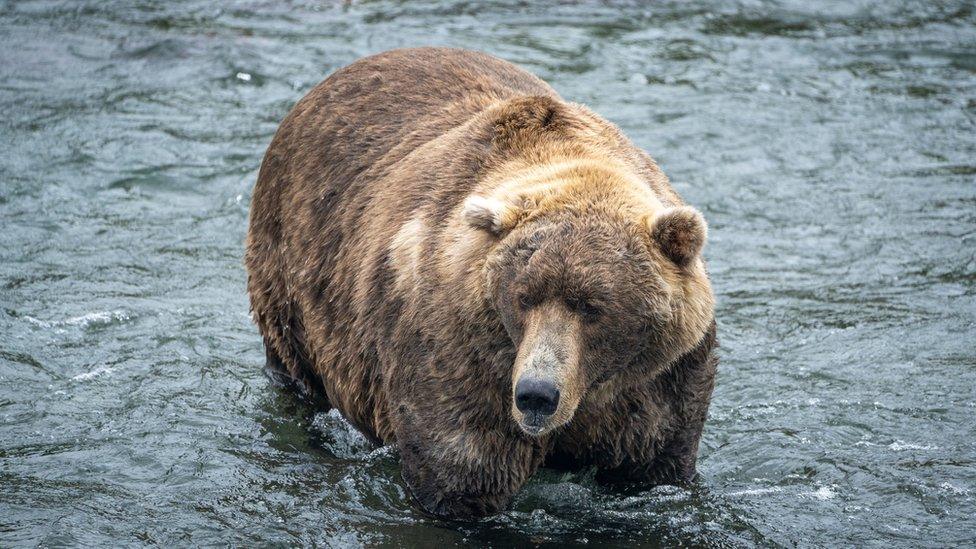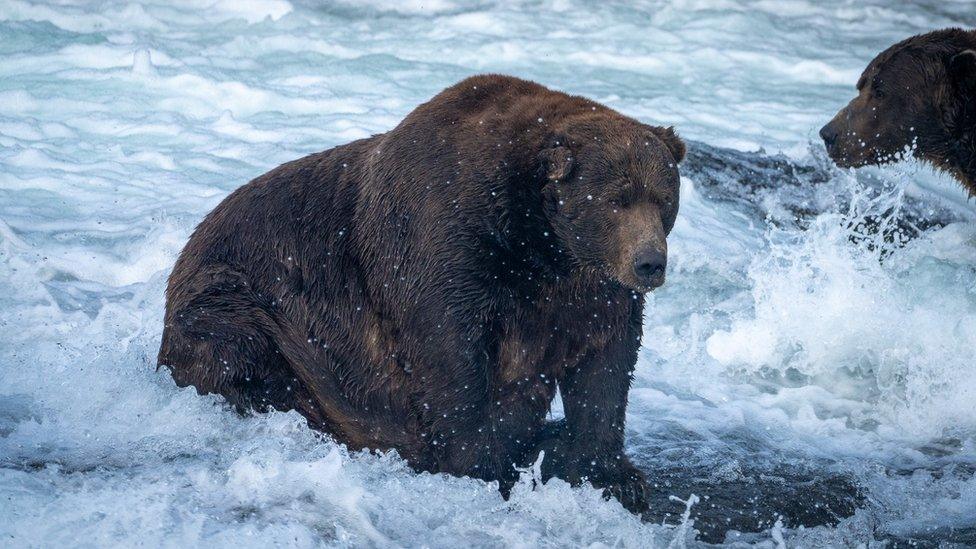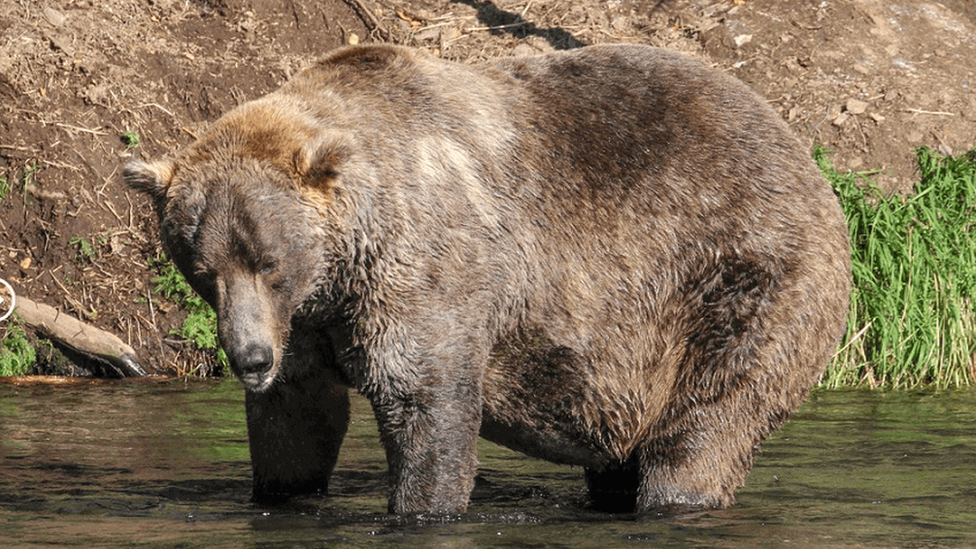Fat Bear Week: Race is on for Alaska's bulkiest bear
- Published

Otis, pictured here in September, is a popular pick for champion of Fat Bear Week, known for his poise and patience
For humans, staying warm in the winter often means swapping out flimsy tank-tops for thick parkas. For Alaskan bears, it means eating a jaw-dropping 500lb (225 kg) of fresh salmon.
These bulking creatures are the focal point of Fat Bear Week - a highly anticipated online bracket that pits the portly mammals at Alaska's Katmai National Park against one another, with voters crowning the fattest of them all.
The competition is stiff this year: Otis, a large adult bear with the record for most Fat Bear Week wins at four, is back to defend his title.
He once ate 42 salmon in one sitting, and his fishing skills and patience are hard to beat.
But Bear 747, winner of Fat Bear Week 2020, might give Otis a run for his money. He is one of the largest bears on earth, weighing as much as 1,400lb (635kg). Most bears know they can't compete with him.
The winner of Fat Bear Week 2022 remains to be seen. Voting is open until 11 October - Fat Bear Tuesday - when the champion will be crowned.
Until then, people can watch their favourite bears via livestream, external and follow their journey as they pile on their gains for the winter and feast at Alaska's Brooks River, located in Katmai National Park's sprawling eight million acre reserve.

Bear 747, pictured here in September, is one of the largest at Alaska's Katmai National Park. He was crowned the champion of Fat Bear Week in 2020
Organisers of the "extremely popular" Fat Bear extravaganza say viewers tune in from almost every country in the world, and have taken quite a liking to the charismatic creatures.
"It's fairly rare to get to know wild animals on an individual level," said Mike Fitz, founder of the inaugural Fat Bear Week in 2014 and the resident naturalist with explore.org, which operates the bear livestreams.
Each bear has a unique story, Mr Fitz said, and some have developed quite the fan base. For example, Otis has a loyal following who enjoy his poise and calm in stressful hunting conditions.
"[Otis] goes to his spot, he sits there, he waits for his meals to come to him, and it is a very successful strategy," Mr Fitz said. "He's the most patient bear that I have ever seen."
Others marvel at the steadfastness of mother bears who are devoted to keeping their cubs safe and fed before they are forced to seek shelter from the cold.
Fat Bear Week also teaches onlookers how North American brown bears prepare for the winter - by getting fat to survive.
Bears emerge from their hibernation in the summer months weary and thin. They then spend their time hunting enormous amounts of fish. By October, they've put on so much weight that some are almost unrecognisable.
In November, the bears start heading towards their dens where they will hibernate for six months. In that time, they don't eat, drink water, or pass urine or faeces.
"They're surviving at that time just on their body fat," Mr Fitz said, adding that they remain healthy throughout.
Like its ursine* stars - [*definition: 'of, or to do with bears'] - Fat Bear Week seems to have hit its peak. Mr Fitz said votes on the first day, 5 October, had already surpassed last year's.
As for who his favourite hefty hibernator is, Mr Fitz said he has officially endorsed Bear 747.
"I think he is the fattest bear so he deserves the vote, but other people are welcome to disagree - and they often do," he said.

You may also be interested in:
Sit back and enjoy the sounds of wild Alaska and the creatures that call this home
- Published6 October 2021

- Published1 October 2021